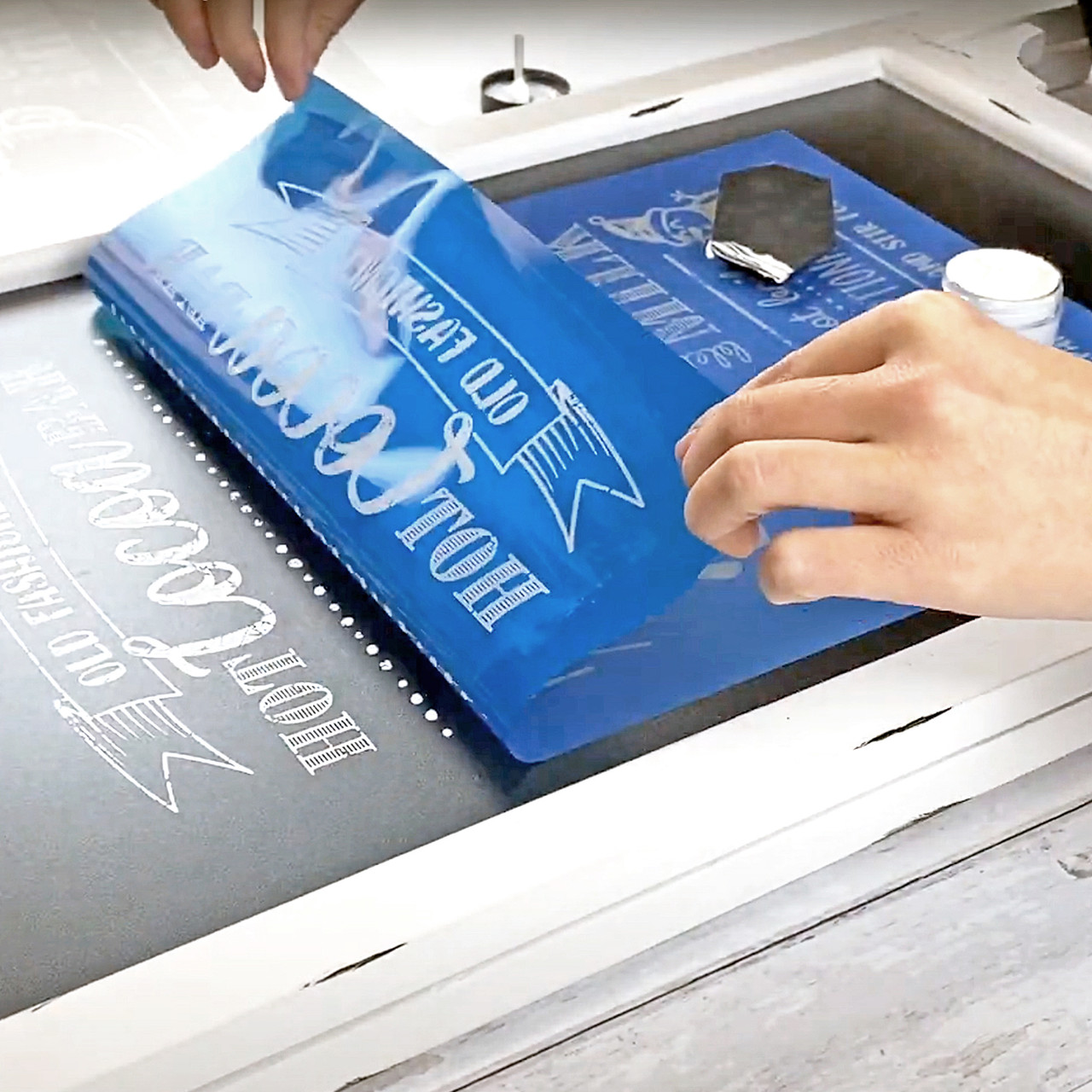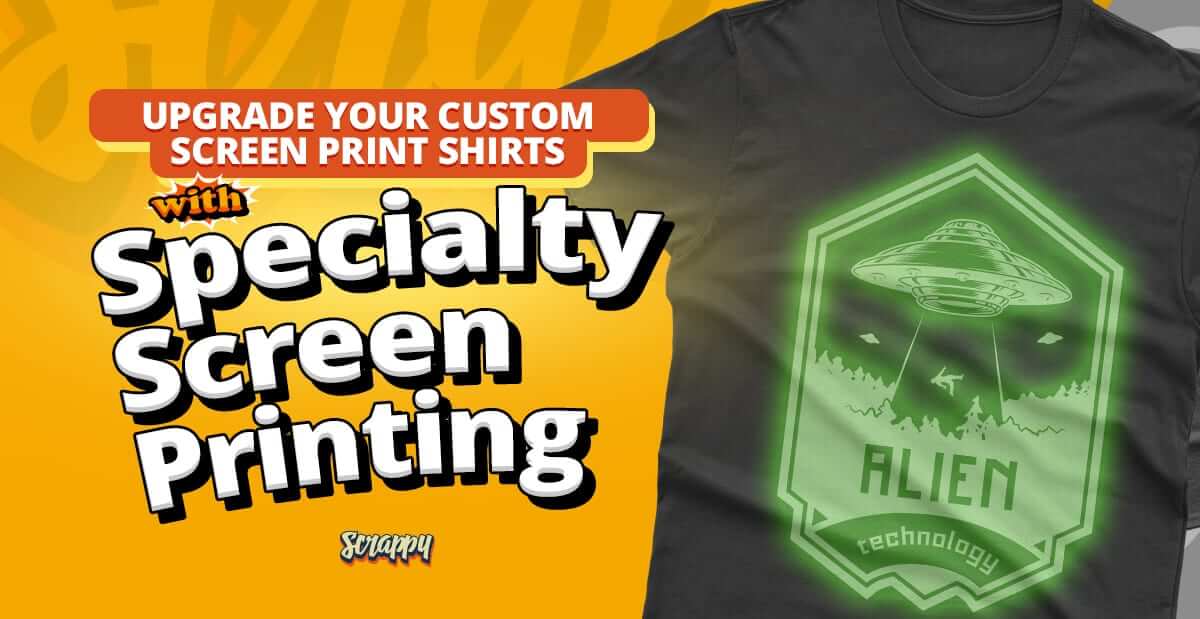High-End Silk Screen Printing for Premium Garments
High-End Silk Screen Printing for Premium Garments
Blog Article
Screen Printing Uncovered: Every Little Thing You Required to Understand About Tee Shirt and Garment Printing Strategies
Display printing is an interesting method that combines art with method, using countless opportunities for creative thinking. Ready to check out the crucial components that make screen printing an art kind?
The Fundamentals of Screen Printing: Just How It Functions
When you plunge right into screen printing, you'll find it's both an art and a science. At its core, screen printing includes creating a pattern, or display, that enables ink to pass via only in details areas.
Position the display over the textile, then use a squeegee to press ink through the display onto the garment. Each action is necessary, and mastering them will raise your display printing abilities, changing simple garments into special, meaningful items.
Kinds Of Screen Printing Methods
When you comprehend the essentials of display printing, it's time to discover the numerous strategies that can boost your designs. One prominent approach is typical screen printing, where ink is pressed via a stenciled display.
If you're intending for great information, take into consideration discharge printing. This strategy eliminates dye from the textile, leaving a soft, classic look. Another alternative is plastisol printing, recognized for its durability and dazzling shades, making it a preferred for numerous brands. Ultimately, trying out halftone printing to produce gradient results and detailed styles. Each strategy has its one-of-a-kind charm, so do not hesitate to try them out to find what suits your design best!
Crucial Equipment for Display Printing
To achieve magnificent lead to display printing, having the right tools is essential. You'll require a sturdy screen printing structure, which holds the mesh that moves your design onto the garment. Next off, buy premium mops; these are vital for using ink equally across the display. You'll additionally require a great direct exposure unit to produce your displays, as well as a washout booth for cleansing them after use. A trustworthy heat resource, like a conveyor clothes dryer or heat press, is important for curing your prints to ensure long life. Don't neglect an appropriate workspace, outfitted with tables and storage space for your products. Protective gear, such as handwear covers and masks, will certainly maintain you secure from chemicals and inks. With the right devices, you'll be well on your means to producing professional-quality prints.
Selecting the Right Inks and Materials
When choosing inks and materials for screen printing, you need to take into account the kind of ink that works best for your project. Think of textile compatibility to ensure your layouts look last and terrific lengthy. Explore environment-friendly ink alternatives to make your printing process more lasting.
Kinds Of Display Inks
Selecting the appropriate screen ink is essential for accomplishing vibrant, long lasting prints that fulfill your project's requirements. There are numerous kinds of screen inks to take a look at. Specialized inks, such as metallic or glow-in-the-dark, can include unique impacts to your styles.

Textile Compatibility Factors To Consider
Understanding fabric compatibility is vital for accomplishing high-grade screen prints, especially considering that various products react distinctly to different inks. Constantly check your inks on example textile to ensure they stick effectively and maintain shade integrity. Furthermore, keep in mind that material weight and texture can impact the last result, so selecting the appropriate ink and material combination is vital for your task's success.
Eco-Friendly Ink Options
Environment-friendly inks are ending up being a preferred option for display printers that wish to decrease their ecological impact while keeping quality. When picking inks, take into consideration water-based inks, which are much less harmful and less complicated to tidy up compared to standard solvents. These inks bond well with fabrics, providing lively outcomes without toxic chemicals. You might likewise check out eco-solvent inks that make use of less volatile organic compounds (VOCs), making them a more secure option for both your health and wellness and the earth.
Furthermore, look for inks made from renewable energies, such as soy or vegetable-based options. By picking the appropriate inks and materials, you'll not only develop spectacular styles however likewise add to an extra sustainable printing process. Make the switch, and your prints will certainly mirror your dedication to the atmosphere!
Preparing Your Style for Screen Printing

File Format Demands
To ensure your layout looks dynamic and sharp on material, you'll need to pay close interest to submit layout needs for screen printing. Make sure your style has a transparent background to stop undesirable white sides on your prints. Keep color settings in mind; CMYK is conventional for display printing, so transform your RGB develops accordingly.
Shade Splitting Up Strategies
Shade separation is a vital step in preparing your layout for screen printing, and mastering it can substantially improve your print quality. You'll require to break your layout right into individual shades, as each shade calls for a separate screen during printing. This precision not only ensures accurate color representation however also simplifies the printing process.
Resolution and Dimension
Accomplishing the very best lead to display printing starts with assuring your design has the ideal resolution and size. Ideally, your art work ought to go to least 300 DPI (dots per inch) for sharp, clear prints. Your last item may look less than professional and pixelated. if you use lower resolution.
When it involves size, think about the measurements of your print area. Style your art work to match the last print size, ideally creating it in the real measurements you'll be printing. By doing this, you'll avoid any type of like it unexpected scaling issues.
Always examine your design in both vector and raster formats. Vector graphics can be scaled without losing high quality, making them ideal for screen printing. Preparing properly will assure your layout looks remarkable on every garment!
Step-by-Step Display Printing Refine
Display printing is a dynamic process that allows you to produce lively layouts on numerous surface areas. To get going, you'll need a display, solution, and your picked ink. Prepare your display by cleansing it extensively. Next off, use the solution uniformly and allow it completely dry in a dark area. When dry, subject your screen to light with your design positioned on it, which will harden the emulsion where the light hits, creating a pattern - screen printing kit.
After washing out the unexposed solution, your screen is ready. Set it up on your printing surface and align your garment underneath it. Put ink onto the display and utilize a squeegee to press the ink with the pattern onto the material. Lift the screen meticulously and allow the print completely dry. Finally, treat the ink utilizing heat to guarantee toughness. That's it! You've successfully display printed your design.
Tips for Effective Screen Printing Projects
While you're diving into your display printing projects, bear in mind that prep work is essential to success. Start by collecting all your materials-- inks, squeegees, garments, and displays. A clean work space assists protect against unwanted mistakes, so clean up prior to you begin.
Following, confirm your read more art work is high-resolution and appropriately sized for your garment. Evaluate your display for proper direct exposure and clean it completely to avoid smudges. When blending your inks, comply with the supplier's guidelines to attain the best uniformity.
During printing, apply also pressure with your squeegee for constant outcomes. Don't rush; take your time to validate each print meets your criteria. After printing, let your garments dry entirely before managing or packaging them.
Last but not least, constantly maintain a sample of your help future referral. In this manner, you can analyze your development and boost your techniques gradually. Happy printing!

Frequently Asked Concerns
How much time Does It Require To Establish up a Display Printing Job?
Setting up a screen printing job commonly takes about thirty minutes to an hour. You'll prepare the displays, mix inks, and readjust journalism. The moment differs based upon intricacy and experience, so remain organized!
Can I Publish on Various Textile Keys In Using the Very Same Method?
Yes, you can print on various textile types utilizing the same technique, yet you'll require to change your settings and inks. Some textiles soak up ink differently, so exploring warranties the very best results for every material.
What Are Typical Errors to Stay Clear Of in Display Printing?
When display printing, stay clear of common errors like utilizing the incorrect ink, neglecting proper exposure times, or missing pre-press checks. Always check your setup and maintain clean screens to guarantee high quality outcomes each time.
Just How Can I Properly Clean and Maintain My Display Printing Devices?
To correctly clean and maintain your screen printing equipment, you must on a regular basis wash displays with ideal solvents, check mops for wear, and guarantee all devices are stored completely dry and dust-free. Uniformity boosts and avoids pricey repair work efficiency.
Is Screen Printing Eco-friendly Contrasted to Various Other Approaches?
Screen printing can be a lot more eco-friendly than other techniques, particularly if you utilize eco-conscious products and water-based inks. By picking sustainable products and methods, you minimize waste and decrease your influence on the planet.
Screen Printing Uncovered: Every Little Thing You Required to Know About T-Shirt and Garment Printing Methods
At its core, display printing involves producing a pattern, or display, more info here that permits ink to pass through only in particular locations. Placement the display over the textile, then use a squeegee to push ink with the display onto the garment. One preferred method is conventional screen printing, where ink is pressed via a stenciled screen.When choosing inks and materials for display printing, you require to take into account the kind of ink that functions ideal for your project.
Report this page